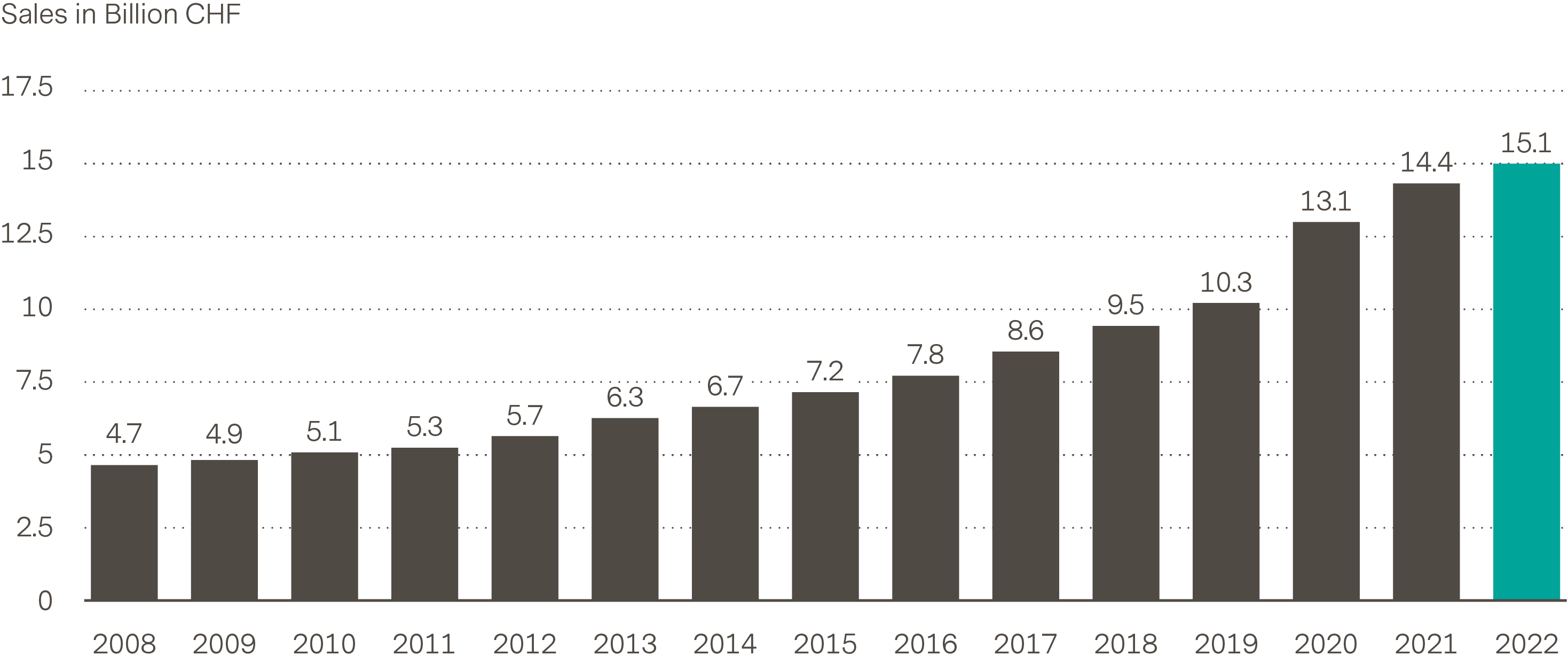Hybrid Retail: How Amazon Changes the Future of Shopping
Volt NewsWhat it’s about
- Online vs. offline. E-commerce vs. retail. An online giant, of all things, wants to change this narrative.
- Amazon has developed not just one, but several concepts for brick-and-mortar stores and has already opened its first outlets.
- Hybrid Shopping is the name of the model in which online stores and retailers merge to create the future of shopping together.
We fill our virtual shopping baskets click by click. Electronics, clothing, food and even furniture can be or-dered more conveniently than ever before. So it's no surprise that online shopping is becoming more and more common. Even local farms and corner stores are using online services to sell their products alongside their bricks-and-mortar outlets. With even the smallest stores increasingly moving into the digital sphere, it is probably a solid sign that the future of shopping might only take place in the virtual world. But an online giant, of all things, seems to counter this. That's right, Amazon has presented not just one, but several con-cepts for brick-and-mortar stores - and has already opened its first outlets.
Digitalization has reached almost every area of life, be it in education, industry or consumption. But nowhere does the clash between the real and digital world seem to be as palpable as in the retail sector. Even before the pandemic, the future of the retail sector was not looking so good, as online stores were taking more and more customers from brick-and-mortar stores. Ultimately, the tense relationship was further exacerbated by the Covid 19 pandemic. While store closures and sales slumps brought the retailers to their knees during this period, online giants were able to achieve record figures.
Online Retail Sales in Switzerland

Source: Statista
The annual sales figures for the Swiss e-commerce sector highlight how much it has grown in just a few years. Interestingly, the values have continued to rise consistently after the big jump in the pandemic year 2020, even though a large part of the restrictions have been lifted. Thus, the growth to date may indicate that the full potential of e-commerce has not been reached yet. Does this in turn mean that physical stores might be replaced entirely by online stores in the future? Amazon's plans suggest otherwise. Amazon Go, Amazon Fresh, and Amazon Style are the online giant's projects, which are designed to offer the best of both worlds.
Amazon Fresh: Shopping Without a Wallet
In the USA they are called "Amazon Go", in the UK "Amazon Fresh" - these are physical "convenience stores" of the online giant, which offer groceries as well as other products for daily needs. But unlike other stores, there are no checkouts or corresponding staff at Amazon Fresh stores. The shopping experience? Reduced to the essentials. At Amazon Fresh, you enter the shopping area, pick the items you want from the shelves and then leave the store. The check-out is automated.
As such, shopping without having to interact with employees is not an innovation. Self-checkout is already offered in various forms in retail, but unlike Amazon's model, there is usually a checkout or station where you have to pay. In the Amazon Fresh store, however, everything is handled through the Amazon account and the Amazon app. In order to enter the store area, a QR code from the app must be scanned first. Once inside the store, artificial intelligence and data from multiple sensors as well as cameras ensure that the goods the customer takes from the shelves go directly into the app's digital shopping cart. As soon as the person leaves the store, the purchase is debited from the Amazon account.
Amazon Style: Just Like Online Shopping in Real Life
In spring 2022, Amazon opened its first clothing store in California. Similar to its grocery counterpart, "Amazon Style" offers various options that are not available in other fashion stores. Normally, part of the shopping experience involves picking out the clothes you want, taking them off the rack and carrying them into the dressing room. At "Amazon Style," however, each item of clothing on display has a code that can be scanned using the corresponding Amazon app. There is no need to search for the right size, as Amazon already knows it from previous online purchases.
All you have to carry around in the Amazon Style store is your smartphone with the app. The selected items of clothing are automatically sent to the dressing room - together with other matching items that are selected algorithmically. There, the shopping experience from the future continues. In the dressing room, customers can rate the garments they have tried on on a touchscreen and request additional items and sizes, which will arrive in the dressing room within a few minutes. Another innovative feature is the payment process, which is handled with a simple hand wave. Cash and card are absolutely superfluous at Amazon Style.
One-Time Experiment or Future Reality?
With the Covid 19 pandemic and the restrictions that came with it, many retailers have started selling their goods online as well. Be it via an online store, social media or other digital channels to reach the clientele even during this time. However, the fact that brick-and-mortar stores are increasingly present online is not only related to the pandemic: "Hybrid shopping" is the keyword. Nowadays, it's easier than ever to create an online store. This format scores points for efficiency and convenience in shopping and reduces dependence on a physical store. For brick-and-mortar stores, it therefore makes sense to run an online store as well, not only to reach more people, but also to cater to a specific target group that is predominantly out and about in the digital world.
Online giants such as Amazon and Zalando, which already has a number of stores in Germany, have probably also recognized that online stores can cover many, but not all, customer needs. Contrary to the expectations of many, the young, digital-savvy generation does not seem to want to completely abandon retail. According to a study by the Kearney Consumer Institute, 74 percent of Gen Z consumers find a "curated in-store shopping experience focusing on a limited number of products" particularly appealing. For this group, "in-store shopping" is an activity that allows them to "switch off" from the digital world. Since online stores cannot offer such an experience, e-commerce providers are looking for new touchpoints with the young clientele - and these are likely to be in retail.
Hybrid Shopping Needs Both
With its brick-and-mortar stores, online giant Amazon is making it clear that retail and e-commerce do not have to be competitors. Amazon Fresh and Amazon Style stand for a "hybrid shopping" concept in which the two worlds are intended to complement each other: Personal customer service in physical stores is combined with the advanced technology of online stores. Such hybrids of online stores and retail are seen as a response to consumer behavior, which had changed significantly in recent years. Although many people have become accustomed to the convenience of online stores, the younger generation in particular craves the exclusivity of brick-and-mortar stores. Therefore, e-commerce, as well as retail, are important components of a possible future in which "hybrid shopping" could soon be part of everyday life.
Sounds interesting?
With volt by Vontobel, you can participate in the development of various investment themes as well as alternative investments such as commodities and cryptocurrencies.
Risks of investing in financial markets
Investments in special topics on the international financial markets are associated with risks. The price, value and return of an investment, particularly in a special theme and across borders, depend, among other things, on economic developments, the global attention given to the theme in the international financial markets and the price of the underlying securities.




